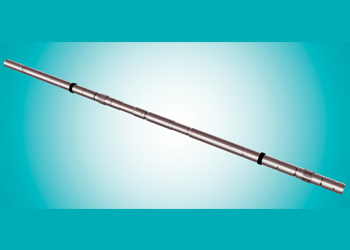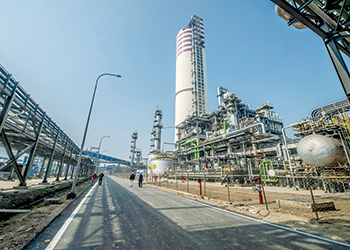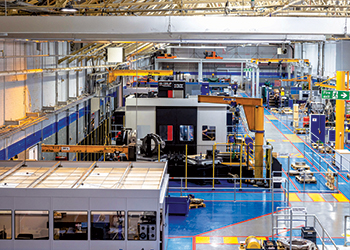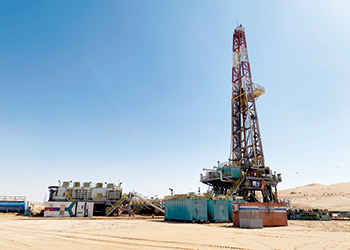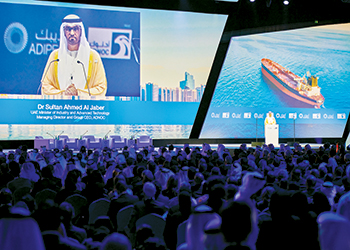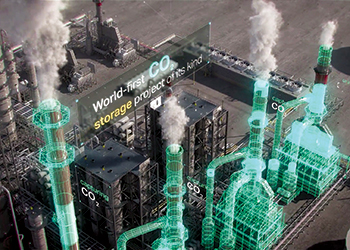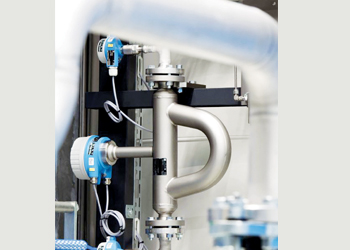
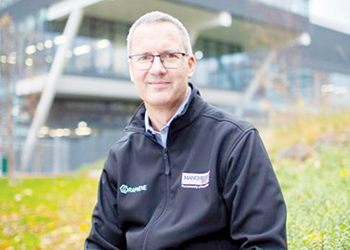 Baker ... leading innovation
Baker ... leading innovation
With the material’s numerous applications across many sectors, including energy, its properties include making materials stronger, electrically conductive and more sustainable with lower CO2 emissions, James Baker,
CEO of Graphene@Manchester, tells OGN
Graphene is being extolled as a 2D wonder material that has the breakthrough potential to deliver transformational technologies.
Realising this potential, Abu Dhabi-based Masdar–a leader in sustainable development–and Khalifa University of Science and Technology are partnering with Graphene@Manchester on research and commercialisation.
This will make Abu Dhabi be among the first cities in the world to benefit from graphene as the Emirate looks to build a sustainable future.
Graphene@Manchester is a community that includes the academic–led National Graphene Institute (NGI) and the commercially-focused Graphene Engineering Innovation Centre (GEIC), a pioneering facility backed by Masdar.
In an exclusive interview, James Baker, CEO of Graphene@Manchester, told Abdulaziz Khattak of OGN energy magazine how graphene’s pioneering role has given the material an iconic status and has sparked a revolution in materials science.
What is graphene and how did this material come about?
Graphene was first isolated by two scientists at The University of Manchester in 2004. Driven by curiosity, they took some graphite and strips of Scotch tape and by peeling this over many times were able to isolate a single layer of atomic carbon or a two-dimensional (2D) material that is now known as graphene.
 |
|
A graphene enhanced hydrogen pressure vessel |
This achievement was recognised internationally six years later when the scientists were awarded the Nobel Prize for Physics. The key feature of graphene is its unique and superlative properties that have the potential to transform the performance of many types of new products and applications.
What are the possible applications for graphene?
Graphene was the first of a family of 2D materials – collectively labelled the Graphenes – but when added to an existing material can begin to enhance and improve the properties of that product.
Applications are numerous and span across many sectors, including energy and construction, aerospace, and automotive to name a few. Its properties include making materials stronger and more thermally and electrically conductive, as well as being more sustainable with lower CO2 emissions.
What is graphene's sustainability factor with respect to the 9R basics?
Graphene and 2D materials can play a key role with respect to the 9Rs. In particular, they can make material more viable for recycling and reuse.
Good examples include the use of end-of-life tyres that can be recycled into new value added products, through to the reuse of aggregate and bitumen for construction and roads.
Significantly, the graphene itself can be a by-product of decarbonisation. So, for example, one methodology for making graphene is from methane (CH4) to create graphene and hydrogen, which can be reused in a circular economy.
Tell me how big a game changer will graphene be in energy transition?
 |
Graphene and 2D materials will play a key role across energy transition from decarbonisation to lightweighting of structures and materials, through to new forms of energy storage (including batteries, supercapacitors and hydrogen).
Beyond graphene, there is also a whole family of 2D materials that increasingly will support and enhance energy transition to new and more efficient methods and products.
Tell us about the potential uses of graphene in the wider energy industry?
Graphene can be produced as a by-product from the oil and gas industry, that is, turning waste into value added products.
It can also play a role in a range of upstream and downstream products from pipelines to anti-corrosion coatings, through to catalysts and lubricants.
Graphene can also play a key role in renewable technology for more efficient wind turbines, through to new types and forms of PV technology.
Can graphene improve energy storage in batteries for the renewable energy industry?
Work is underway to both improve the performance of existing battery storage as well as developing new types of batteries for the future. These include the development of supercapacitors with the ability to do rapid charge and recharge.
This could form a key element of future hybrid systems containing, for example, battery technology working with a supercapacitor (or a fuel cell) to increase overall performance and capacity.
Graphene has a very high surface area and has the highest theoretical electrical conductivity of any material. This makes it ideal for improving energy storage devices such as batteries and supercapacitors.
What are the known limitations of graphene in energy storage?
Graphene and 2D materials are still at a relatively new stage of development for a new advanced material. However, we are already seeing early products and applications in the marketplace today, with significant potential for future growth and improved performance going forward.
What is Masdar's interest in graphene, and how does it plan to use the material?
Masdar, a champion of graphene and advanced materials, recognised the pioneering activities in Manchester and invested jointly with the UK government to create the Graphene Engineering Innovation Centre (GEIC) housed in the purpose-built Masdar Building in Manchester.
The role of the GEIC is to accelerate the adoption of graphene and 2D materials, working between academia and industry, but with a particular focus around sustainability and the drive towards net-zero.
The partnership has now been enhanced through a joint programme with Khalifa University called Research Innovation Centre-2D Materials (RIC-2D), which is looking to further build the partnership between Manchester and Abu Dhabi and the creation of new capabilities and supply chain in UAE.



















































































